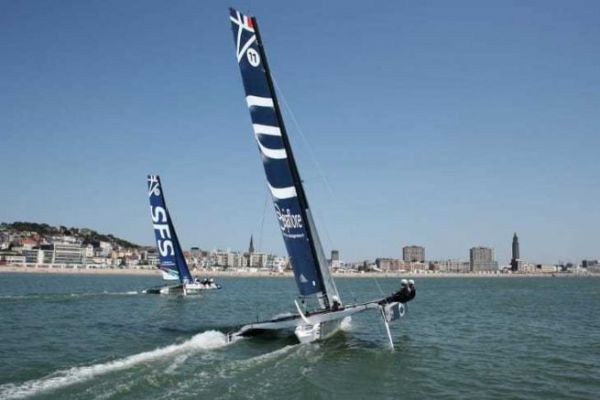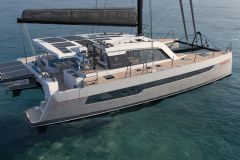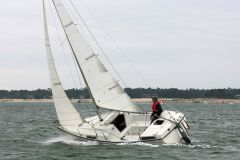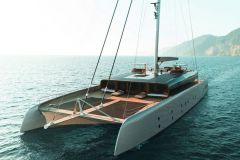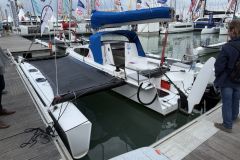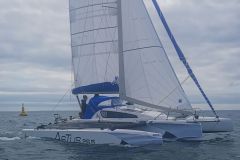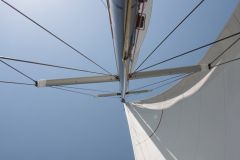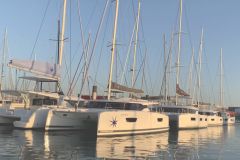From raft to catamaran
Traditional Western shipbuilding has for centuries been focused on monohulls, a term that is probably anachronistic when talking about ancient ships, as the question of the number of hulls was absent. But successive expeditions have allowed explorers to open the field of knowledge by discovering new forms of boats. It is probably from one of these voyages that William Petty got the idea to design the first catamaran, which he did not name at the time, in the early 1660s.
The term appears for the first time, in English, in William Dampier's book, Voyages aux Terres Australes, à la Nouvelle Hollande, under the form of catamaran. He describes the boats as follows: "On the Coromandel coast they are called catamarans. They are one or two logs, sometimes of a light wood [...] so small, that they carry only a man whose legs and foundation are always in the water."
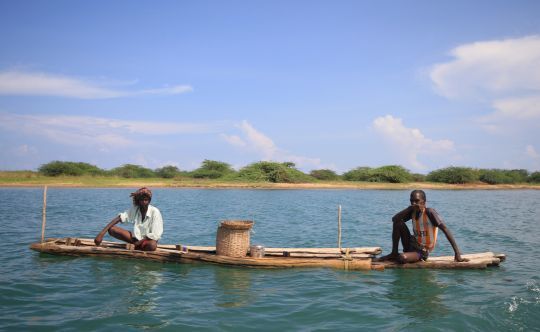
In French, we will find, at first, the forms catamaron, catimaron and cantimaron, before the English form takes over. William Dampier describes a form of raft observed in New Holland and around the Bay of Bengal, which could be similar to rudimentary multihulls. The term comes from the Tamil language kattumaram, composed of the roots katta, meaning to bind, and maram, meaning wood.
The trimaran, a Western linguistic invention
If we stick to the literal interpretation, the number of hulls does not matter. A boat with one main hull and two floats would therefore also be a catamaran. And yet, when the trimaran, inspired by Polynesian traditions, developed in the West, it had to be given a name. It is a barbarism derived from the word catamaran which takes over, replacing cata by tri, the prefix meaning three. Attested in 1952 in French and 1949 in English, it was initially condemned by a few figures like Jean Merrien. Today, the term is uncontested.
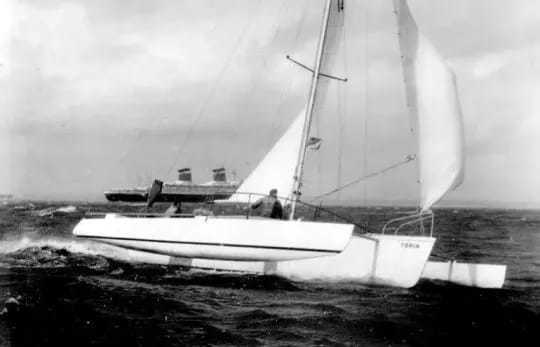
Other neologisms have been coined since then, following the course of naval architects' inventions, with the arrival of four-hulled quadrimarans or five-hulled pentamarans.
At a time when multihulls are taking up so much space in boating, it was time to pay tribute to the heritage of the Tamils in yachting!

 /
/ 